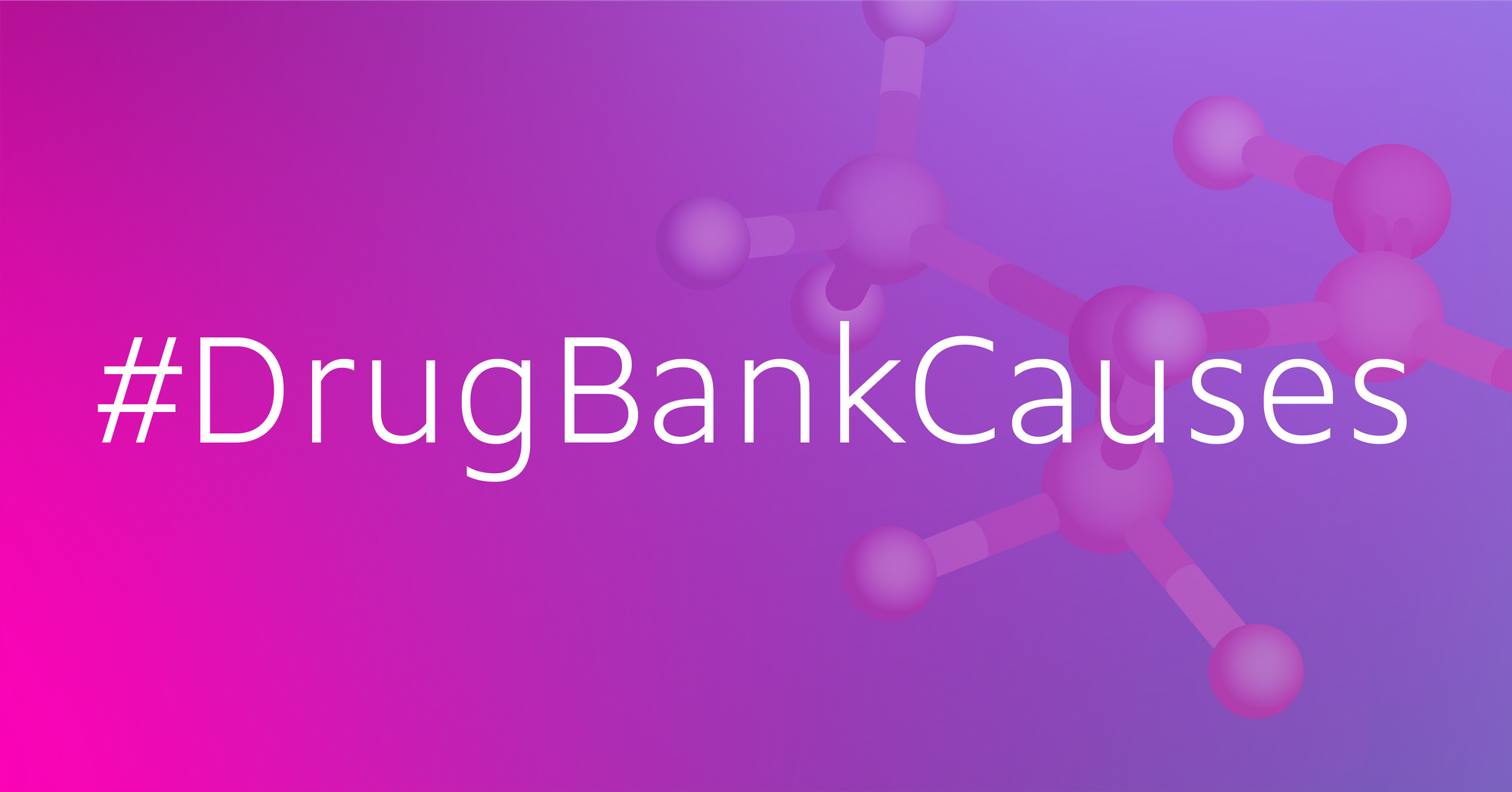Join us on Kaysen's Quest: Learn more about Gene Therapy, Zolgensma

As a company that specializes in drug information, DrugBank always tries to remain informed about novel treatments, drug approvals, and drugs that are impacting global health. At the top of our minds lately is Zolgensma (Onasemnogene abeparvovec), a gene therapy indicated for the treatment of Spinal Muscular Atrophy. So why is this on our minds?
Our company is headquartered in Edmonton, Alberta, which is also where Kaysen Martin lives. Kaysen is just shy of turning 2 and was diagnosed with Spinal Muscular Atrophy Type 1. Kaysen has had to rely on Spinraza (nusinersen) which requires multiple painful injections that will continue for the rest of his life, unless he is able to access treatment with Zolgensma, prior to his second birthday on July 17, 2020.
Unfortunately, Zolgensma has yet to receive Health Canada approval, and with a price tag of nearly $3 million, friends have started a GoFundMe page to help the family raise the necessary funds. As of July 10 at 3:30 p.m. MDT, the campaign has raised almost $640,000, but with just under a week left to raise the $3 million total, we wanted to help out.
As a team, we have committed to learning more about the therapy, the disease, and also raising funds for Kaysen’s GoFundMe campaign. The company has committed to donating $2000 to the cause, and will match team contributions up to $1000, for a total DrugBank donation of $4000.
We hope that learning more about Zolgensma as well as learning more about Kaysen’s journey will inspire others to donate to the cause. That’s why our curation team has pulled together a brief overview of Zolgensma for those curious to learn more about the gene therapy:
How does it work?
Zolgensma (onasemnogene abeparvovec) is a single-dose, intravenous gene therapy for pediatric patients under 2 years of age with spinal muscular atrophy (SMA). Spinal muscular atrophy is a disorder resulting from mutations in the gene encoding the SMN protein -- a protein responsible for the health and survival of motor neurons. Insufficient levels of the SMN protein progressively leads to debilitating and often fatal muscle weakness. Although no cure exists, Zolgensma can slow disease progression and improve symptoms and motor function by restoring levels of the SMN protein in the spinal cord. Interestingly, Zolgensma uses a drug delivery vector derived from the adeno-associated virus serotype 9 (AAV9), which allows the drug to bypass the blood-brain-barrier in order to reach its target.
There is an alternative for treating SMA, which is another gene therapy called Spinraza (nusinersen). Spinraza is administered as an injection into the spine and requires 4 initial loading doses, followed by a maintenance dose repeated every 4 months. Although nusinersen has no age limit for administration, it consists of life-long painful spinal injections that costs upwards of 25,000 dollars per treatment. In contrast, Zolgensma is administered just once in a patient’s lifetime.
Why is it not covered in Canada yet?
A few factors contribute to a lack of coverage for Zolgensma in Canada, mainly due to Health Canada’s review process for approval and cost. In Canada, drugs are only authorized for sale once they successfully undergo the Health Canada reviewing process. As of June 19, Novartis Pharmaceuticals Canada Inc. has filed the marketing application to Health Canada for Zolgensma. With ‘Priority Review’ status currently granted, Zolgensma will have a shortened review target period. Although the treatment is not yet approved, there is a Special Access Program which allows healthcare providers to access this drug for patients diagnosed with SMA, as was done in Kaysen’s case. Once a drug is approved for use in Canada, the Patented Medicine Prices Review Board will regulate pricing, ensuring that it is reasonable. However, even if Health Canada authorizes the sale of Zolgensma, drug benefit programs are not guaranteed to provide drug coverage due to provincial and territorial decisions on funding. Although Canada provides universal health care, it does not provide universal prescription drug coverage, which is another barrier to those who would benefit from this therapy.
Why is it so expensive?
Zolgensma is currently priced at $2.125 million USD (or around $2.8 million CAD) for the one-time, lifesaving administration. The treatment carries the “Orphan Drug Designation”, meaning that the therapy intends to treat or prevent the diagnosis of a rare disease or condition affecting less than 200,000 people in the US. To incentivize companies to develop drugs that target rare diseases, the US grants various benefits for this designation, like tax credits and extended market exclusivity. With these exclusive rights, companies can control the price of an orphan drug for extended periods of time. As is the case for Zolgensma, the manufacturers maintain that the multi-billion dollar cost of drug development for a rare disease affecting so few must be offset by high prices to recoup investment and fund future work. Since it addresses the genetic root cause of the disorder, and circumvents the need to spend hundreds of thousands of dollars a year with alternative treatments, developers maintain that Zolgensma’s one-time price tag is reasonable.
Why does this all matter?
We are a company that wants to change the world, and we are starting with helping change the world for Kaysen. Our contribution isn’t large, but we hope that our readers that are moved by the cause consider contributing to Kaysen’s Quest. Together, our collective love of science can help dramatically improve Kaysen’s livelihood. Thanks for considering!
References
- https://www.drugbank.ca/drugs/DB15528
- https://www.spinraza.com/en_us/home/taking/dosing.html
- https://www.spinraza-hcp.com/en_us/home/dosing.html#:~:text=Initiate%20SPINRAZA%20treatment%20with%204,administered%20once%20every%204%20months
- https://pubmed.ncbi.nlm.nih.gov/31211527/
- https://www.novartis.ca/en/news/media-releases/statement-novartis-avxs-101-filing-health-canada
- https://www.canada.ca/content/dam/hc-sc/migration/hc-sc/dhp-mps/alt_formats/hpfb-dgpsa/pdf/prodpharma/prfs_tpfd-eng.pdf
- https://www.canada.ca/en/health-canada/services/drugs-health-products/drug-products/fact-sheets/drugs-reviewed-canada.html
- https://www.canada.ca/en/health-canada/corporate/about-health-canada/public-engagement/external-advisory-bodies/implementation-national-pharmacare/final-report.html#2
- https://www.npr.org/sections/health-shots/2019/05/24/725404168/at-2-125-million-new-gene-therapy-is-the-most-expensive-drug-ever
- https://fortune.com/2020/02/07/zolgensma-high-drug-prices/
- https://www.accessdata.fda.gov/scripts/opdlisting/oopd/detailedIndex.cfm?cfgridkey=444714
- https://www.fda.gov/industry/developing-products-rare-diseases-conditions
- https://www.the-scientist.com/features/how-orphan-drugs-became-a-highly-profitable-industry-64278
- https://www.gofundme.com/f/kaysens-quest

